Increasing Soil Organic Matter Enhances Inherent Soil Productivity while Offsetting Fertilization Effect under a Rice Cropping System
Abstract
:1. Introduction
2. Materials and Methods
2.1. Study Site
2.2. Experimental Design
2.3. Soil and Plant Measurement
2.4. Data Calculations and Statistical Analyses
3. Results
3.1. Y-NPK, Y-CK and FE
3.2. Relationships between SOM and Y-NPK, Y-CK or FE
3.3. Relationship between SOM and Soil Nutrients
4. Discussion
5. Conclusions
Acknowledgments
Author Contributions
Conflicts of Interest
References
- West, P.C.; Gerber, J.S.; Engstrom, P.M.; Mueller, N.D.; Brauman, K.A.; Carlson, K.M.; Siebert, S. Leverage points for improving global food security and the environment. Science 2014, 345, 325–328. [Google Scholar] [CrossRef] [PubMed]
- Paustian, K.; Lehmann, J.; Ogle, S.; Reay, D.; Robertson, G.P.; Smith, P. Climate-smart soils. Nature 2016, 532, 49–57. [Google Scholar] [CrossRef] [PubMed]
- Johnston, A.E.; Poulton, P.R.; Coleman, K. Soil organic matter: Its importance in sustainable agriculture and carbon dioxide fluxes. Adv. Agron. 2009, 101, 1–57. [Google Scholar]
- Murphy, B.W. Impact of soil organic matter on soil properties-a review with emphasis on Australian soils. Soil Res. 2015, 53, 605–635. [Google Scholar] [CrossRef]
- Huang, Y.; Sun, W. Changes in topsoil organic carbon of croplands in mainland China over the last two decades. Chin. Sci. Bull. 2006, 51, 1785–1803. [Google Scholar] [CrossRef]
- Luo, Y.; Li, Q.; Wang, C.; Fu, Y.; Xin, Z.; Li, B.; Yuan, D. Spatio-temporal variations of soil organic carbon and total nitrogen and driving factors in purple soil hilly area of mid-Sichuan Basin in the past 30 years. Acta Pedol. Sin. 2016, 53, 583–593. (In Chinese) [Google Scholar]
- Bauer, A.; Black, A.L. Quantification of the effect of soil organic matter content on soil productivity. Soil Sci. Soc. Am. J. 1994, 58, 185–193. [Google Scholar] [CrossRef]
- Kanchikerimath, M.; Singh, D. Soil organic matter and biological properties after 26 years of maize–wheat–cowpea cropping as affected by manure and fertilization in a Cambisol in semiarid region of India. Agr. Ecosyst. Environ. 2001, 86, 155–162. [Google Scholar] [CrossRef]
- Seremesic, S.; Milosev, D.; Djalovic, I.; Zeremski, T.; Ninkov, J. Management of soil organic carbon in maintaining soil productivity and yield stability of winter wheat. Plant Soil Environ. 2011, 57, 216–221. [Google Scholar]
- Lal, R. Soil carbon sequestration impacts on global climate change and food security. Science 2004, 304, 1623–1627. [Google Scholar] [CrossRef] [PubMed]
- Lal, R. Enhancing crop yields in the developing countries through restoration of the soil organic carbon pool in agricultural lands. Land Degrad. Dev. 2006, 17, 197–209. [Google Scholar] [CrossRef]
- Lal, R. Beyond Copenhagen: Mitigating climate change and achieving food security through soil carbon sequestration. Food Secur. 2010, 2, 169–177. [Google Scholar] [CrossRef]
- Pan, G.; Smith, P.; Pan, W. The role of soil organic matter in maintaining the productivity and yield stability of cereals in China. Agr. Ecosyst. Environ. 2009, 129, 344–348. [Google Scholar] [CrossRef]
- Alvarez, R.; Grigera, S. Analysis of soil fertility and management effects on yields of wheat and corn in the Rolling Pampa of Argentina. J. Agron. Crop Sci. 2005, 191, 321–329. [Google Scholar] [CrossRef]
- Loveland, P.; Webb, J. Is there a critical level of organic matter in the agricultural soils of temperate regions: A review? Soil Tillage Res. 2003, 70, 1–18. [Google Scholar] [CrossRef]
- Oelofse, M.; Markussen, B.; Knudsen, L.; Schelde, K.; Olesen, J.; Jensen, L.; Bruun, S. Do soil organic carbon levels affect potential yields and nitrogen use efficiency? An analysis of winter wheat and spring barley field trials. Eur. J. Agron. 2015, 66, 62–73. [Google Scholar] [CrossRef]
- Cui, Z.L.; Zhang, F.S.; Chen, X.P.; Miao, Y.X.; Li, J.L.; Shi, L.W.; Xu, J.F.; Ye, Y.L.; Liu, C.S.; Yang, Z.P.; et al. On-farm estimation of indigenous nitrogen supply for site-specific nitrogen management in the North China plain. Nutr. Cycl. Agroecosyst. 2008, 81, 37–47. [Google Scholar] [CrossRef]
- Espe, M.B.; Kirk, E.; van Kessel, C.; Horwath, W.H.; Linquist, B.A. Indigenous nitrogen supply of rice is predicted by soil organic carbon. Soil Sci. Soc. Am. J. 2015, 79, 569–576. [Google Scholar] [CrossRef]
- Fan, M.; Lal, R.; Cao, J.; Qiao, L.; Su, Y.; Jiang, R.; Zhang, F. Plant-based assessment of inherent soil productivity and contributions to China’s cereal crop yield increase since 1980. PLoS ONE 2013, 8, e74617. [Google Scholar] [CrossRef] [PubMed]
- Lu, R. Analytical Method of Soil Agricultural Chemistry; China Agricultural Science and Technology Press: Beijing, China, 2000. (In Chinese) [Google Scholar]
- Food and Agriculture Organization of the United Nations. FAOSTAT-FAO’s Corporate Database. 2016. Available online: http://www.fao.org/statistics/databases/ (accessed on 1 June 2016).
- Wang, W.; Lu, J.; Chen, F.; Lu, M.; Li, H.; Li, X. Study on fertilization effect and fertilizer use efficiency of rice in Hubei province. Plant Nutr. Fertil. Sci. 2010, 16, 289–295. (In Chinese) [Google Scholar]
- Olk, D.C.; Cassman, K.G.; Simbahan, G.; Cruz, P.S.; Abdulrachman, S.; Nagarajan, R.; Satawathananont, S. Interpreting fertilizer-use efficiency in relation to soil nutrient-supplying capacity, factor productivity, and agronomic efficiency. Nutr. Cycl. Agroecosyst. 1999, 53, 35–41. [Google Scholar] [CrossRef]
- Stewart, W.M.; Dibb, D.W.; Johnston, A.E.; Smyth, T.J. The contribution of commercial fertilizer nutrients to food production. Agron. J. 2005, 97, 1–6. [Google Scholar] [CrossRef]
- Zeng, X.; Han, B.; Xu, F.; Huang, J.; Cai, H.; Shi, L. Effect of optimized fertilization on grain yield of rice and nitrogen use efficiency in paddy fields with different basic soil fertilities. Sci. Agric. Sin. 2012, 45, 2886–2894. (In Chinese) [Google Scholar]
- Zeng, X.; Zhang, J.; Wei, C.; Yu, W.; Huang, D.; Xu, M.; Xu, J. The status and reclamation strategy of low-yield fields in China. Acta Pedol. Sin. 2014, 51, 1–8. (In Chinese) [Google Scholar]
- Körschens, M.; Weigel, A.; Schulz, E. Turnover of SOM and long-term balances—Tools for evaluating sustainable productivity of soils. J. Plant Nutr. Soil Sci. 1998, 161, 409–424. [Google Scholar]
- Alvarez, R.; Alvarez, C.R.; Steinbach, H.S. Analysis Association between soil organic matter and wheat yield in Humid Pampa of Argentina. Commun. Soil Sci. Plant Anal. 2002, 33, 749–757. [Google Scholar] [CrossRef]
- Diaz-Zorita, M.; Buschiazzo, D.E.; Peinemann, N. SOM and wheat productivity in the semiarid Argentine Pampas. Agron. J. 1999, 91, 276–279. [Google Scholar] [CrossRef]
- Cassman, K.G.; Dobermann, A.; Cruz, P.S.; Gines, G.C.; Samson, M.I.; Descalsota, J.P.; Alcantara, J.M.; Dizon, M.A.; Olk, D.C. Soil organic matter and the indigenous nitrogen supply of intensive irrigated rice systems in the tropics. Plant Soil 1996, 182, 267–278. [Google Scholar]
- Tiessen, H.; Cuevas, E.; Chacon, P. The role of soil organic matter in sustaining soil fertility. Nature 1994, 371, 783–785. [Google Scholar] [CrossRef]
- Wang, J.Y.; Yan, X.Y.; Gong, W. Effect of long-term fertilization on soil productivity on the North China Plain. Pedosphere 2015, 25, 450–458. [Google Scholar] [CrossRef]
- Duan, Y.; Xu, M.; He, X.; Li, S.; Sun, X. Long-term pig manure application reduces the requirement of chemical phosphorus and potassium in two rice–wheat sites in subtropical China. Soil Use Manag. 2011, 27, 427–436. [Google Scholar] [CrossRef]
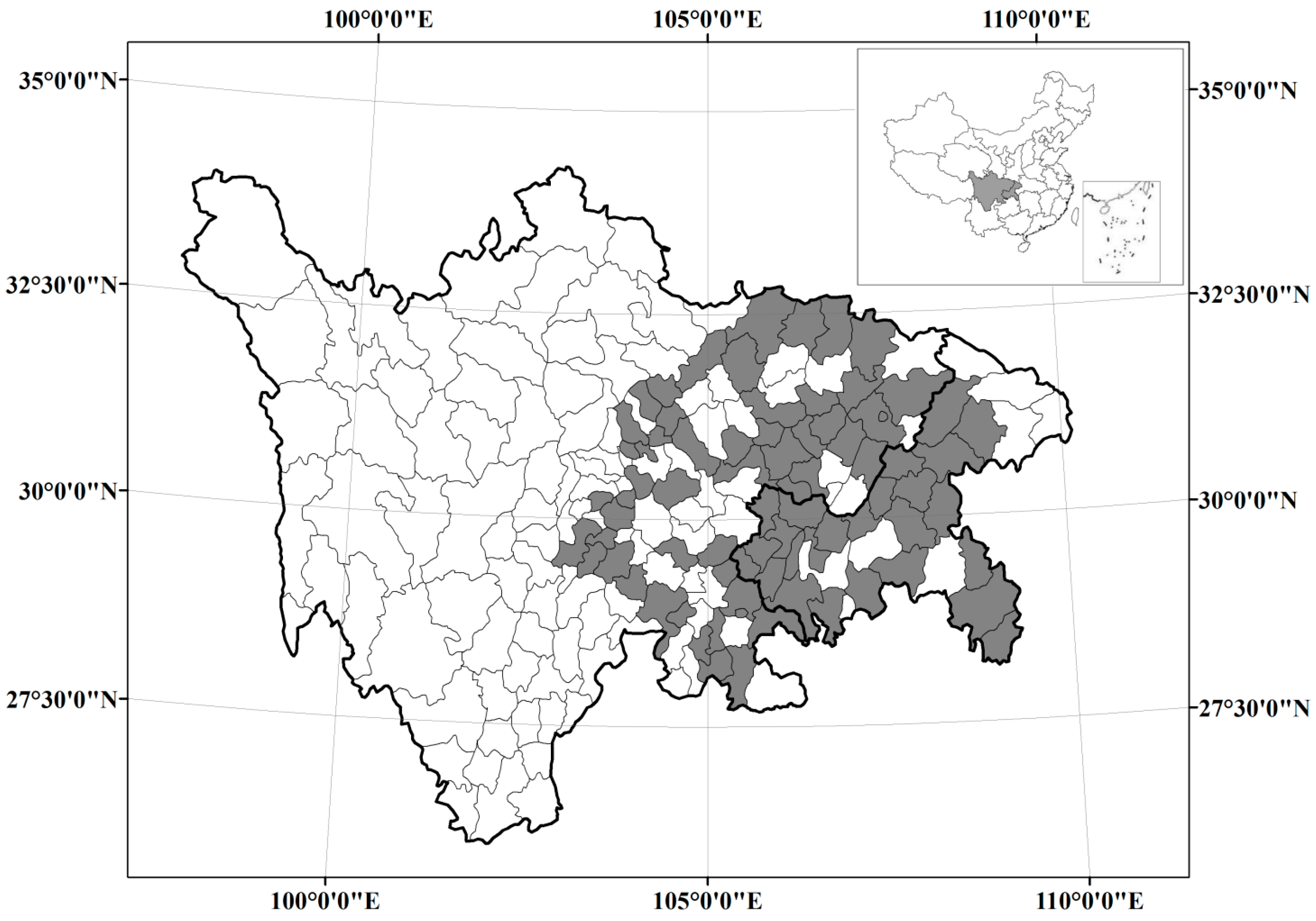
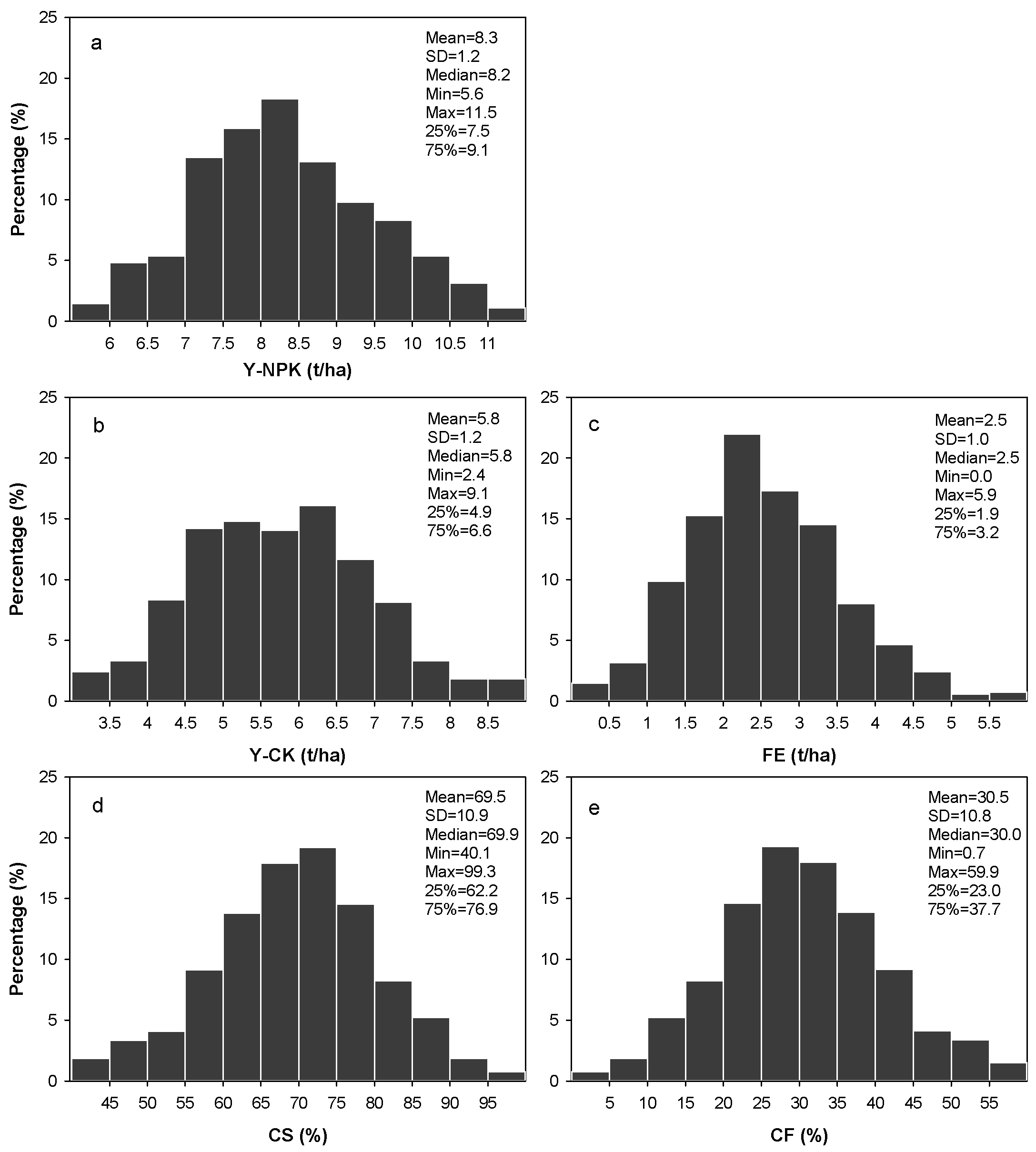
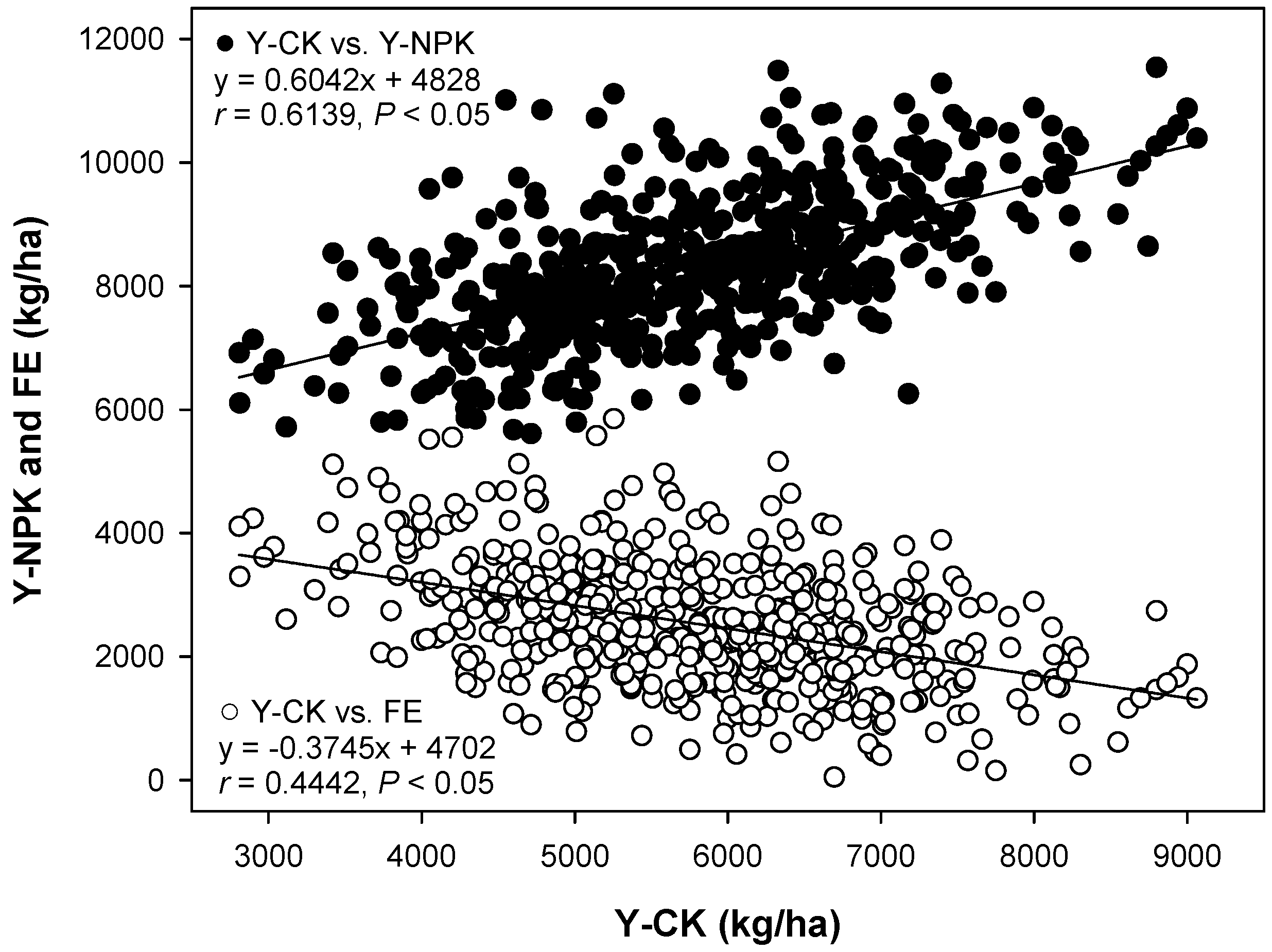

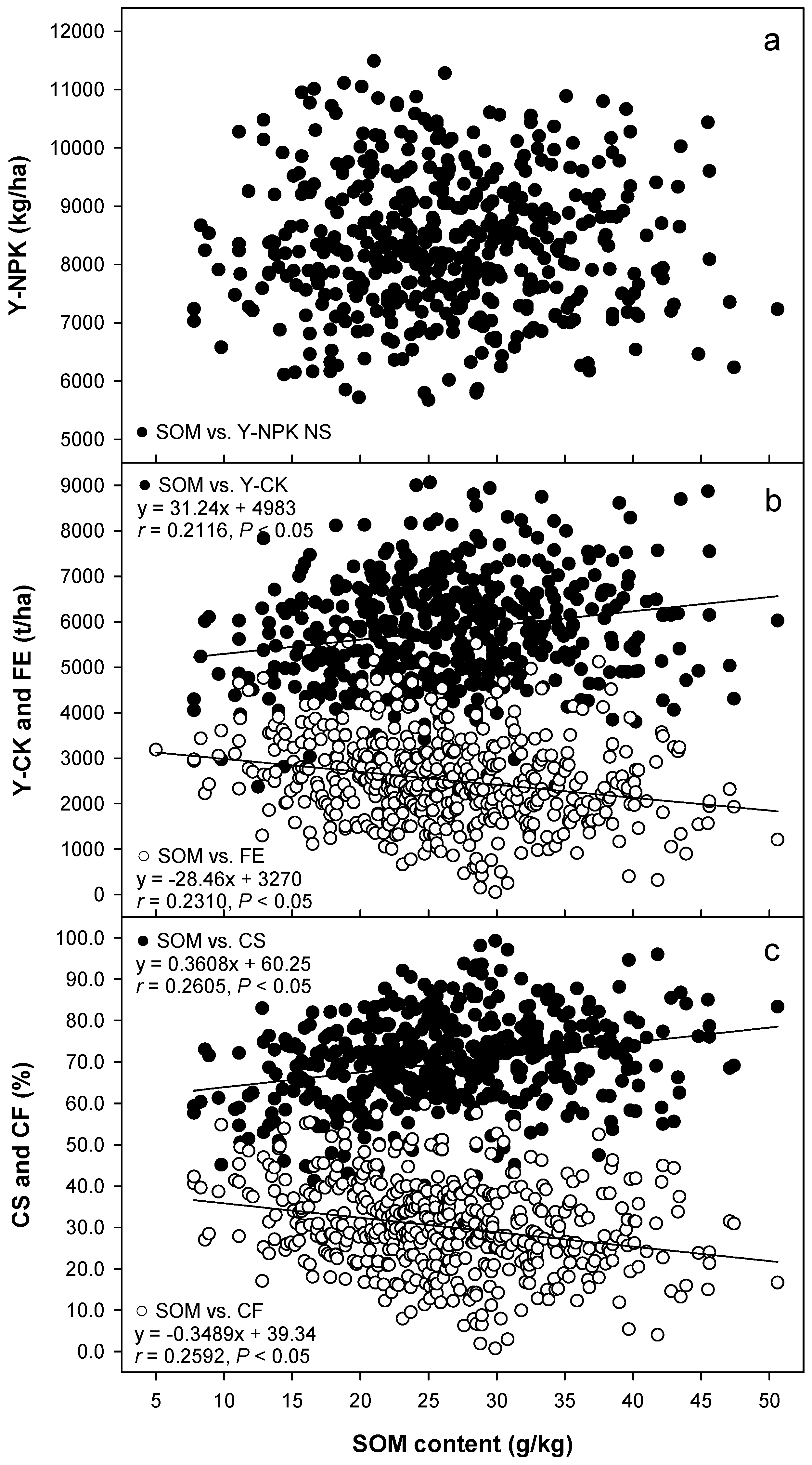
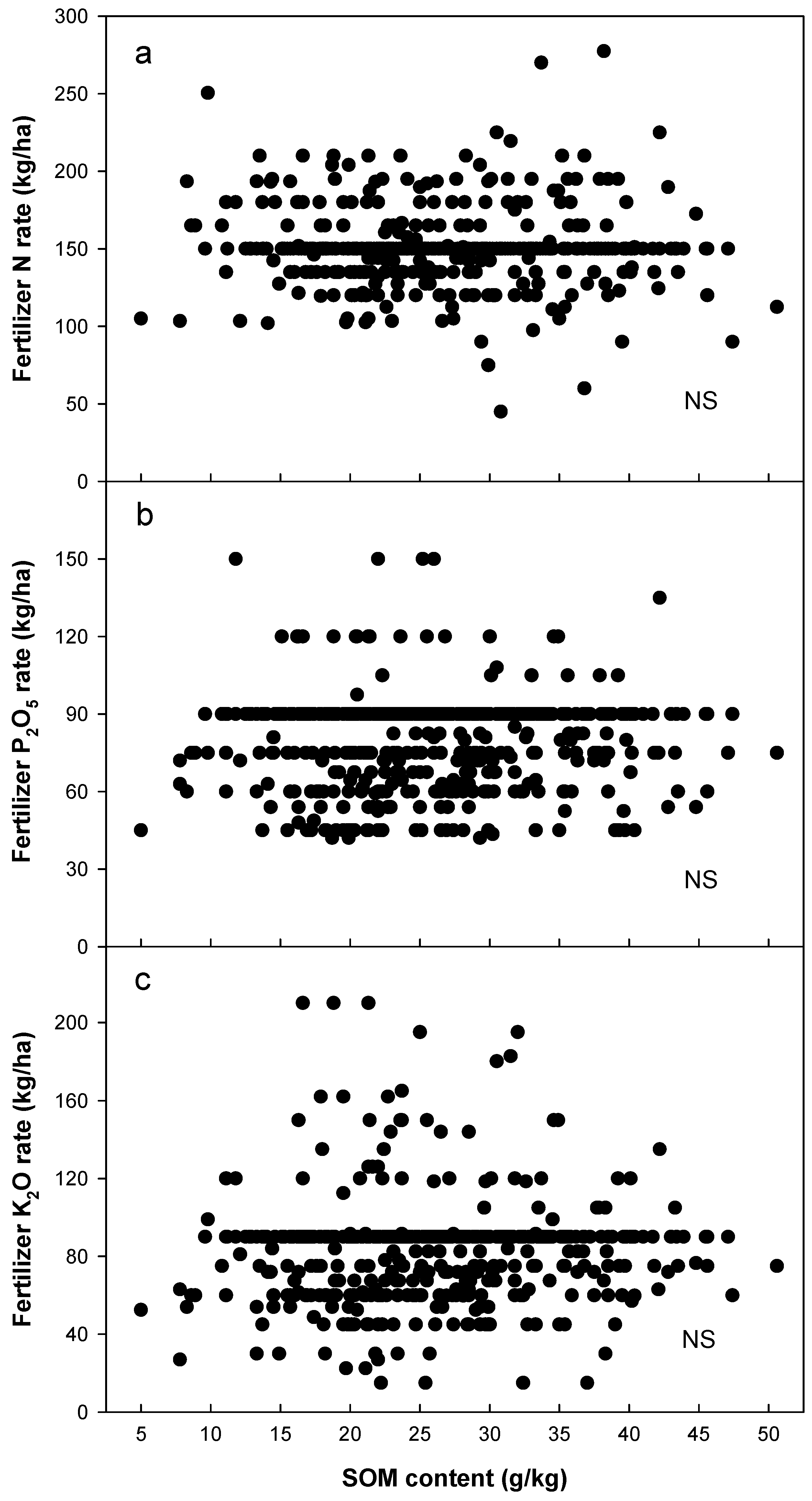
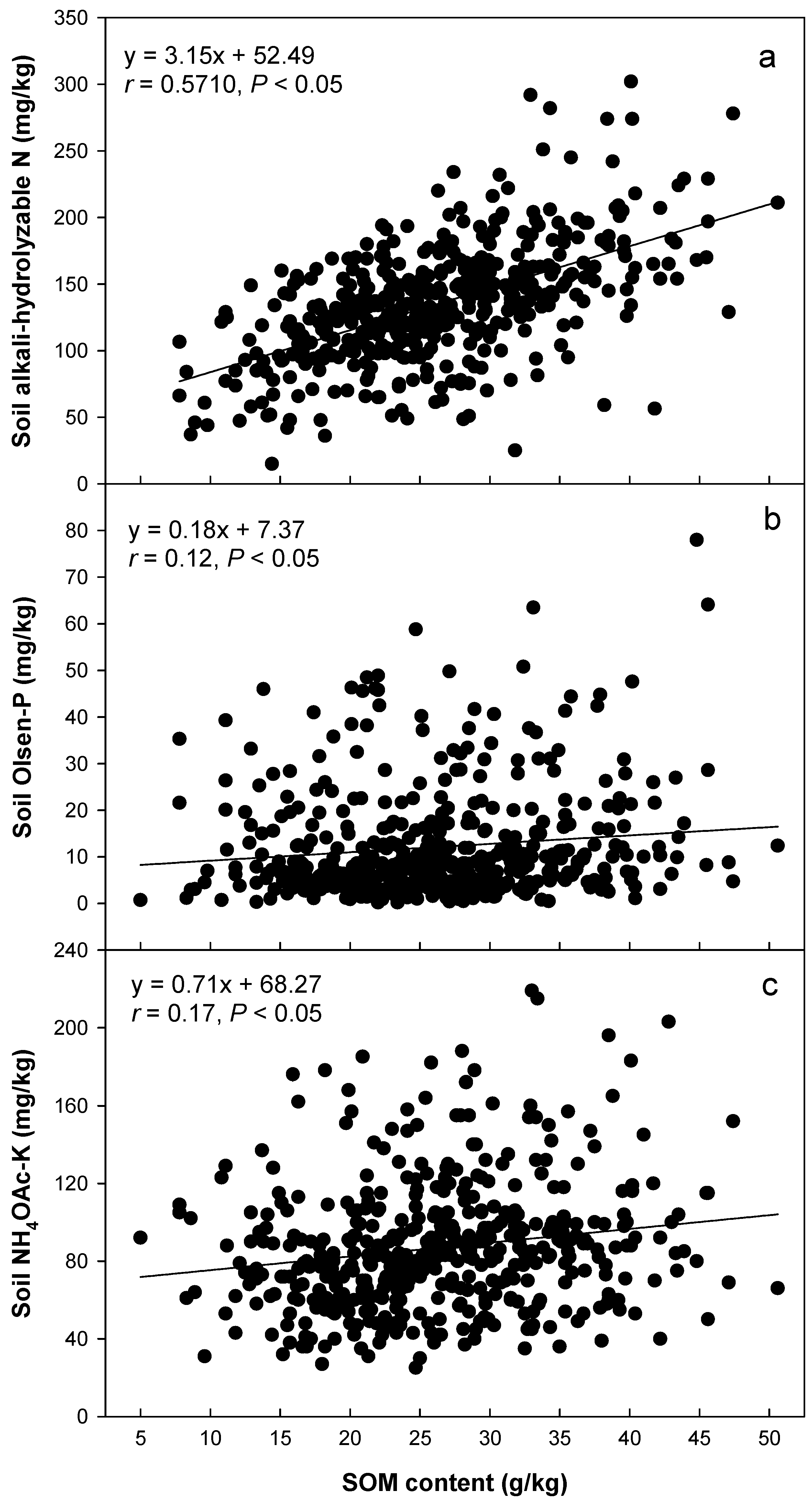
© 2016 by the authors; licensee MDPI, Basel, Switzerland. This article is an open access article distributed under the terms and conditions of the Creative Commons Attribution (CC-BY) license (http://creativecommons.org/licenses/by/4.0/).
Share and Cite
Zhao, Y.-N.; He, X.-H.; Huang, X.-C.; Zhang, Y.-Q.; Shi, X.-J. Increasing Soil Organic Matter Enhances Inherent Soil Productivity while Offsetting Fertilization Effect under a Rice Cropping System. Sustainability 2016, 8, 879. https://doi.org/10.3390/su8090879
Zhao Y-N, He X-H, Huang X-C, Zhang Y-Q, Shi X-J. Increasing Soil Organic Matter Enhances Inherent Soil Productivity while Offsetting Fertilization Effect under a Rice Cropping System. Sustainability. 2016; 8(9):879. https://doi.org/10.3390/su8090879
Chicago/Turabian StyleZhao, Ya-Nan, Xin-Hua He, Xing-Cheng Huang, Yue-Qiang Zhang, and Xiao-Jun Shi. 2016. "Increasing Soil Organic Matter Enhances Inherent Soil Productivity while Offsetting Fertilization Effect under a Rice Cropping System" Sustainability 8, no. 9: 879. https://doi.org/10.3390/su8090879





